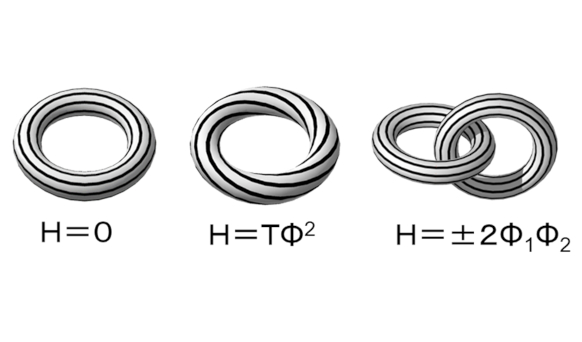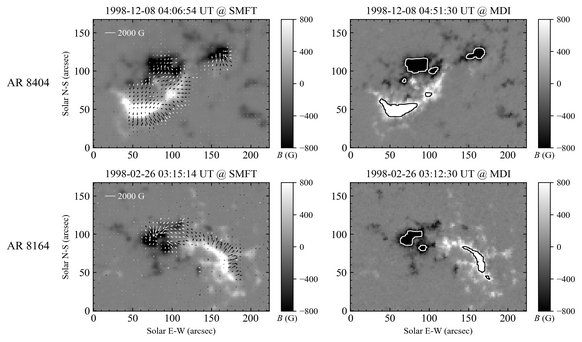Explore the mystery of magnetic helicity transportation from solar interior to the corona
The Sun, the nearest star to us, is not as quiet as it seems, multifarious solar activities happen every hour and moment, for example, sunspots, flares, filaments, prominences, coronal mass ejections, and so on. The occurrence of these phenomena is accompanied by the accumulation and release of energy, and is related to the solar magnetic fields. However, the complexity of solar magnetic field is very difficult to measure and quantitatively describe.

Fig 1: Sample of Magnetic Helicity, in which Φ is magnetic flux and T is twist number. (Image Courtesy of T. Sakurai)
Magnetic helicity is the volume integration of the product of the magnetic field and its vector potential, which could quantitatively characterize the topology properties and nonpotentiality of the solar magnetic field (see Fig.1). Studying the accumulation and transportation of magnetic helicity help to understand the process of energy transmission from generation in solar interior to accumulation in corona. Magnetic helicity is not only conserved in ideal plasma, but also approximately conserved in fast magnetic reconnection process as long as the magnetic Reynolds number is large enough. Therefore, the magnetic helicity in solar interior and in corona could be compared through the newly emerging active regions.
A research team from the National Astronomical Observatories of the Chinese Academy of Sciences (NAOC) computed the accumulated magnetic helicity through the photosphere (H_m^p) and the instantaneous relative magnetic helicity in the corona (H_m^c) by the helicity flux integration method and the finite volume method, respectively. The coronal magnetic fields are obtained from photospheric magnetic fields with the help of the nonlinear force-free field (NLFFF) model.
The researchers found that the consistency of H_m^c and H_m^p is partly dependent on the resolution of the magnetograms and the calculation methods. This work evaluates the merit of NLFFF model, and provides a reference for the subsequent comparison research of different magnetic helicities.
"The study is credited to the excellent data from the Solar Magnetic Field Telescope, which is independently developed by Chinese scientists and has been steadily operating for nearly 40 years," said WANG Quan from NAOC, the first author of this study.
"Our research will help to better understand the future observations from FMG, the first Chinese space magnetograph, which is a main payload on the scientific satellite ASO-S," said Dr. YANG Shangbin from NAOC, the corresponding author of this study.
"In the future, we will expand this method to the dissipation of helicity during solar eruptions," said Prof. ZHANG Mei, the Chief Scientist of Huairou Solar Observing Station.

Fig. 2: Sample active regions for comparing the two helicity calculation methods. (Image by WANG Quan et al.)
This study has been published in The Astrophysical Journal and can be accessed at https://iopscience.iop.org/article/10.3847/1538-4357/ac5593.